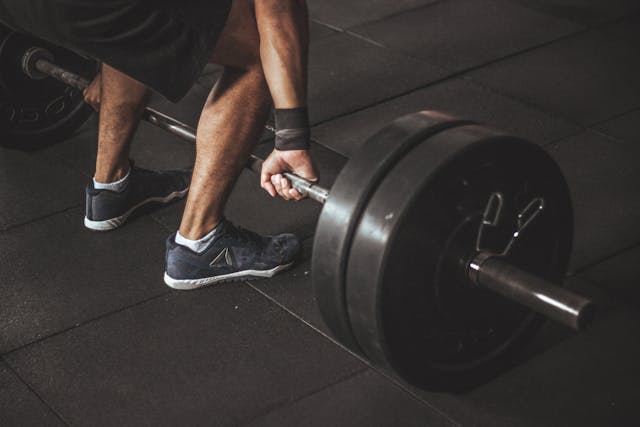Samir Bannout’s Steroid Cycles: What We Can Learn from a Golden-Era Champion
In the world of bodybuilding, few physiques are as admired as that of Samir Bannout, the 1983 Mr. Olympia. Known as “The Lion of Lebanon,” Bannout stood out not just for his muscularity, but for his proportion, definition, and aesthetic flow—hallmarks of the golden era of bodybuilding. While much of his success came from disciplined training and nutrition, it’s no secret that performance-enhancing drugs played a role, as they did for most professional bodybuilders of his time.
Today, there is growing interest in how athletes like Bannout approached their steroid use—especially when compared to the more extreme regimens seen in modern bodybuilding. This post takes a closer look at what is publicly known or speculated about Samir Bannout’s steroid cycles and explores the broader implications of his approach for athletes, fans, and those interested in performance science.
A Strategic Approach to Steroid Use
While Samir Bannout has never released a detailed list of his exact drug protocols, various interviews and insights from those close to the era provide a general idea of how many golden-era athletes managed their cycles. The goal then wasn’t to achieve freakish size, but rather to enhance an already well-developed physique to achieve symmetry, definition, and stage-ready condition.
Bannout likely used a combination of moderate doses of anabolic steroids with an emphasis on aesthetics rather than mass. Some commonly cited compounds from that era include:
-
Testosterone enanthate or cypionate: Used as a base compound in the off-season or early prep for its ability to build lean mass.
-
Deca-Durabolin (nandrolone decanoate): Often used during bulking phases for joint support and gradual muscle growth.
-
Dianabol (methandrostenolone): Popular for short bursts during the off-season to add quick size and strength.
-
Winstrol (stanozolol) and Anavar (oxandrolone): Used during contest prep phases to promote a hard, dry look without excessive water retention.
-
Primobolan and Masteron: Considered “finishing” compounds used closer to competition for muscle preservation and improved visual conditioning.
It’s also speculated that Bannout incorporated Parabolan (trenbolone hexahydrobenzylcarbonate) in moderate amounts during peak contest prep for enhanced muscle density and definition.
These substances, when used thoughtfully and in rotation, contributed to the classic, grainy, and balanced look Bannout brought to the 1983 Olympia stage.
Minimalist Compared to Modern Protocols
What stands out about Bannout’s suspected protocols is the relatively modest dosage and shorter cycle lengths compared to modern norms. Today, it's not uncommon for professional bodybuilders to use grams of various compounds weekly, in addition to growth hormone, insulin, and multiple oral steroids simultaneously.
By contrast, Bannout has publicly criticized this trend. He’s spoken out about the overuse of insulin and high-dose growth hormone in modern bodybuilding, expressing concern for the health risks and the shift away from classic aesthetics toward bloated, disproportionate physiques.
He often advocates for a more measured approach—using drugs sparingly, only when needed, and never as a substitute for hard training, clean eating, and smart recovery.
Contest Preparation Strategy
In preparation for the 1983 Mr. Olympia, Bannout reportedly focused on lean muscle retention and body fat elimination in the final 6–8 weeks leading to the contest. During this phase, he likely reduced or eliminated water-retaining compounds and added “drying” agents like Winstrol, Anavar, and Masteron. Diuretics were used sparingly or only toward the final days before the show.
His goal was not to appear the biggest on stage, but the most complete—something he achieved with a mix of symmetry, striations, and a back that many still consider one of the best in bodybuilding history.
Insights on Off-Season Cycles
In the off-season, Bannout likely relied on basic anabolic steroids like testosterone and nandrolone, sometimes combined with orals like Dianabol to jumpstart gains. Growth hormone, if used at all, was likely administered in low doses—nowhere near the 8–15 IU per day some modern athletes use.
His focus during the off-season was still on maintaining shape, improving weak points, and staying relatively lean. Unlike today’s bulking approaches, which often involve excessive calorie intake and bloating, Bannout valued staying close to contest condition year-round.
A Voice of Reason
What makes Samir Bannout’s insights especially valuable is his willingness to reflect critically on the use of performance-enhancing drugs—both in his era and today. He often reminds listeners and younger athletes that health should be a long-term priority, and that bodybuilding is about building—not destroying—the body.
He encourages athletes to use common sense, keep dosages low, and avoid chasing mass at the cost of longevity. He also emphasizes the importance of proper training, sleep, stress management, and nutrition—fundamentals that steroids cannot replace.
Final Thoughts
Samir Bannout’s legacy is built on more than just a trophy. His philosophy, discipline, and honesty offer valuable lessons for anyone navigating the often murky world of performance enhancement. His suspected steroid use was not reckless or extreme—it was calculated and supplementary to a well-rounded lifestyle focused on excellence and health.
At Pomps Place, we believe in transparency, science, and personal responsibility. Whether you’re a bodybuilder, athlete, or simply someone curious about the history of physical performance, the story of Samir Bannout’s approach reminds us that even in enhanced sports, strategy and restraint can still lead to greatness.




Comments
Post a Comment